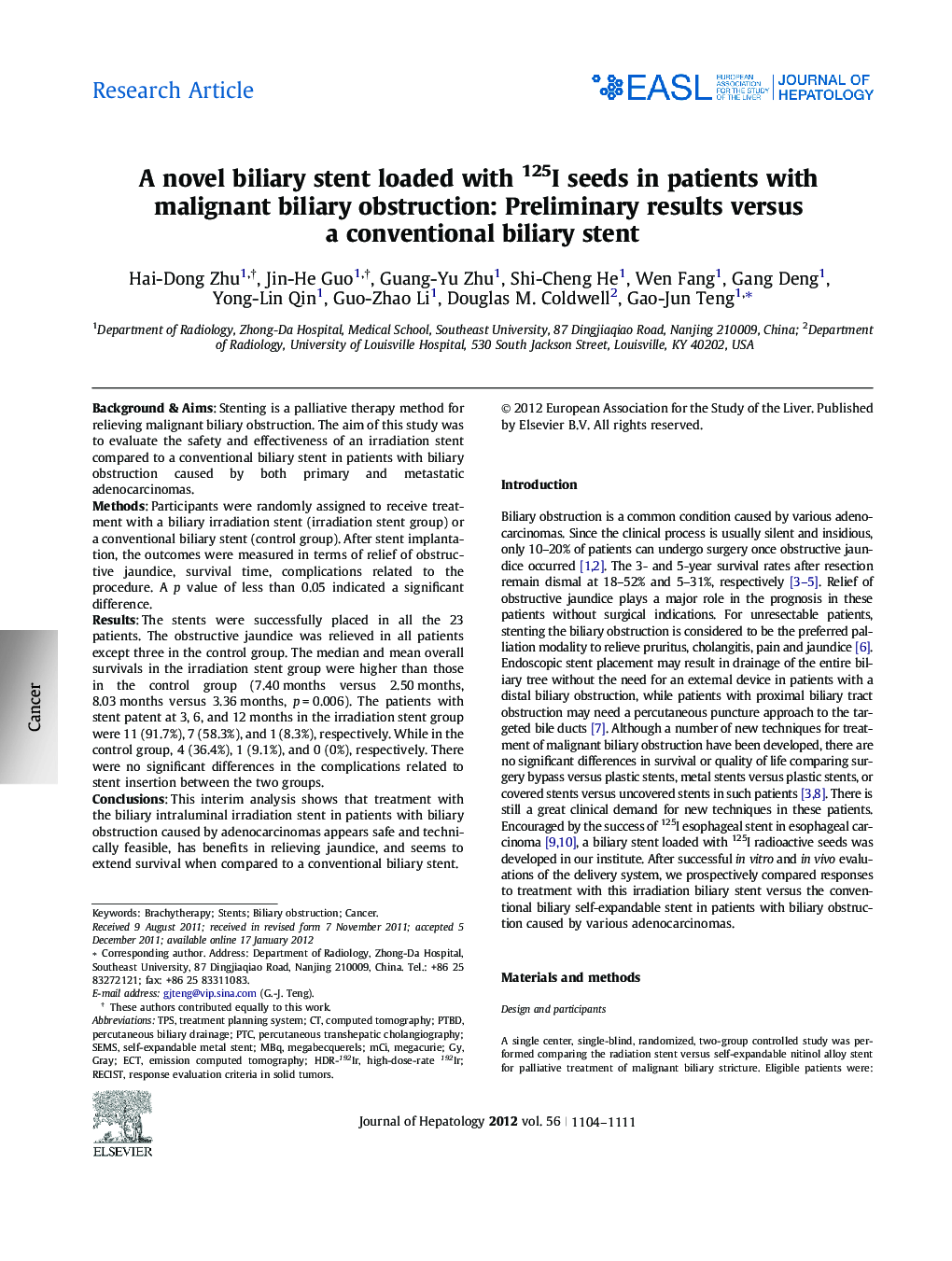| Article ID | Journal | Published Year | Pages | File Type |
|---|---|---|---|---|
| 6104536 | Journal of Hepatology | 2012 | 8 Pages |
Background & AimsStenting is a palliative therapy method for relieving malignant biliary obstruction. The aim of this study was to evaluate the safety and effectiveness of an irradiation stent compared to a conventional biliary stent in patients with biliary obstruction caused by both primary and metastatic adenocarcinomas.MethodsParticipants were randomly assigned to receive treatment with a biliary irradiation stent (irradiation stent group) or a conventional biliary stent (control group). After stent implantation, the outcomes were measured in terms of relief of obstructive jaundice, survival time, complications related to the procedure. A p value of less than 0.05 indicated a significant difference.ResultsThe stents were successfully placed in all the 23 patients. The obstructive jaundice was relieved in all patients except three in the control group. The median and mean overall survivals in the irradiation stent group were higher than those in the control group (7.40 months versus 2.50 months, 8.03 months versus 3.36 months, p = 0.006). The patients with stent patent at 3, 6, and 12 months in the irradiation stent group were 11 (91.7%), 7 (58.3%), and 1 (8.3%), respectively. While in the control group, 4 (36.4%), 1 (9.1%), and 0 (0%), respectively. There were no significant differences in the complications related to stent insertion between the two groups.ConclusionsThis interim analysis shows that treatment with the biliary intraluminal irradiation stent in patients with biliary obstruction caused by adenocarcinomas appears safe and technically feasible, has benefits in relieving jaundice, and seems to extend survival when compared to a conventional biliary stent.
